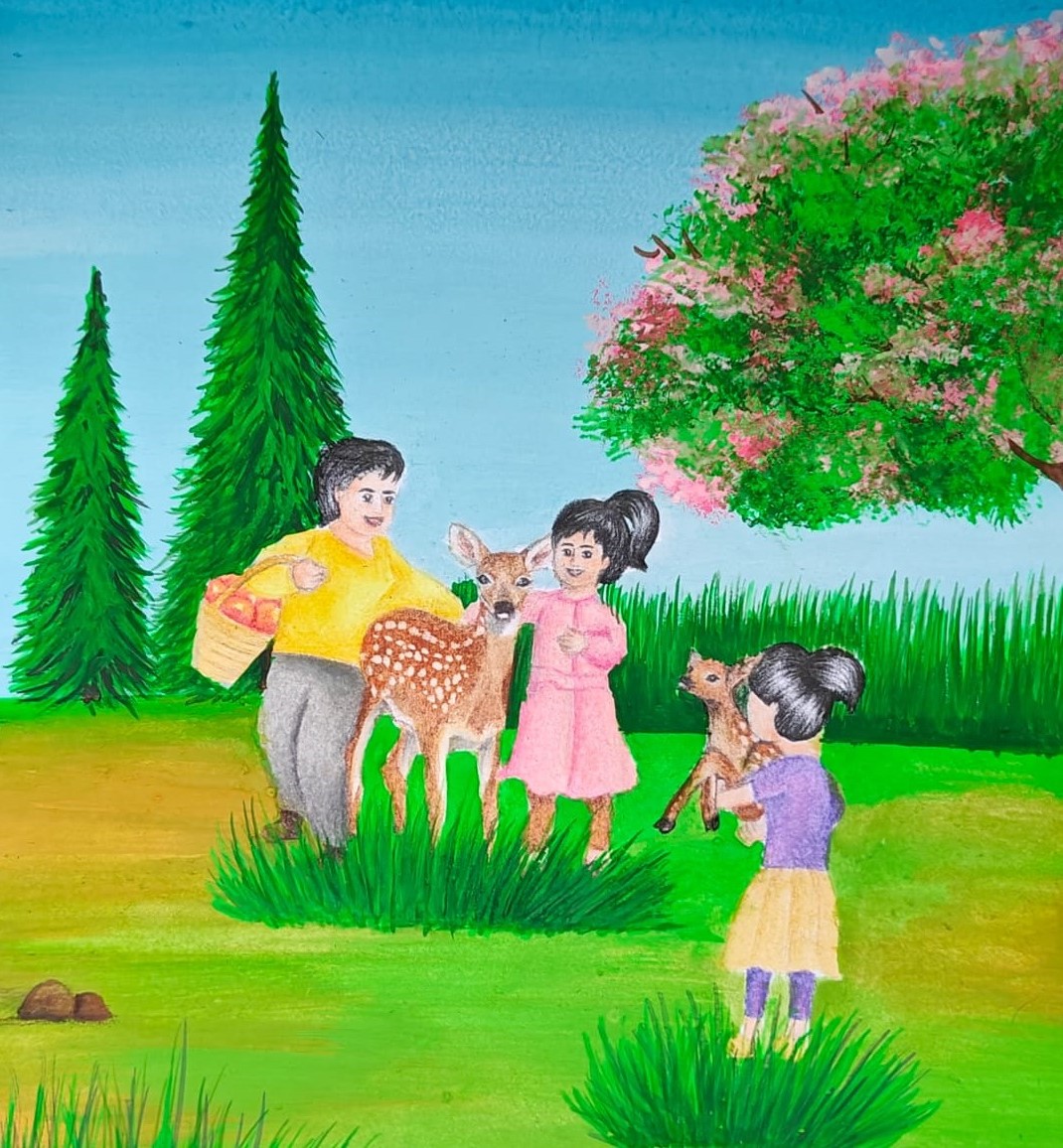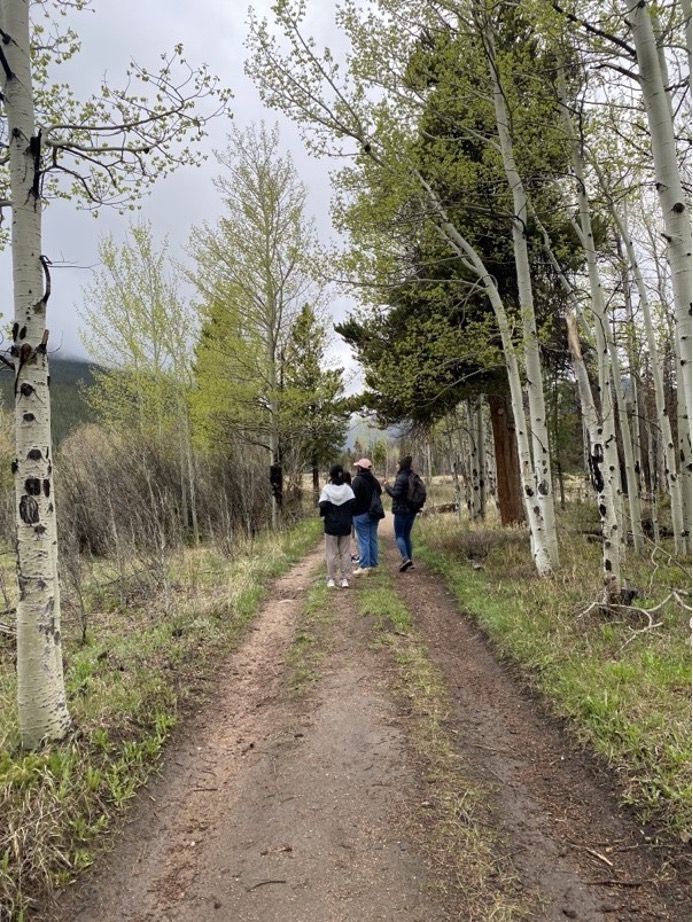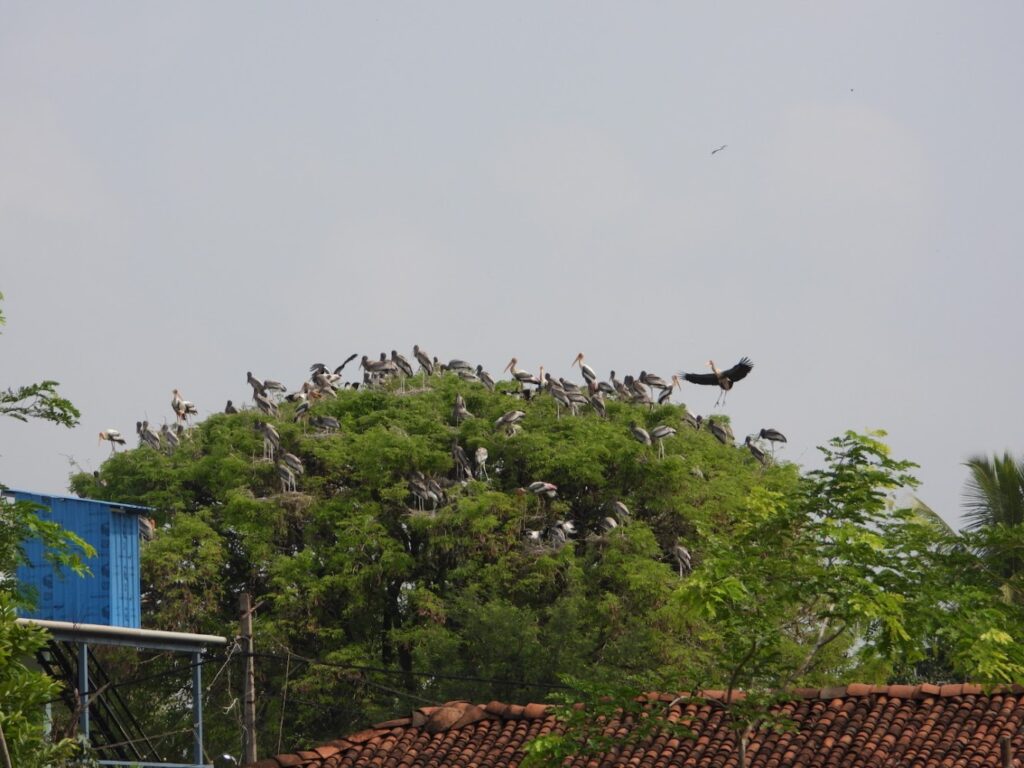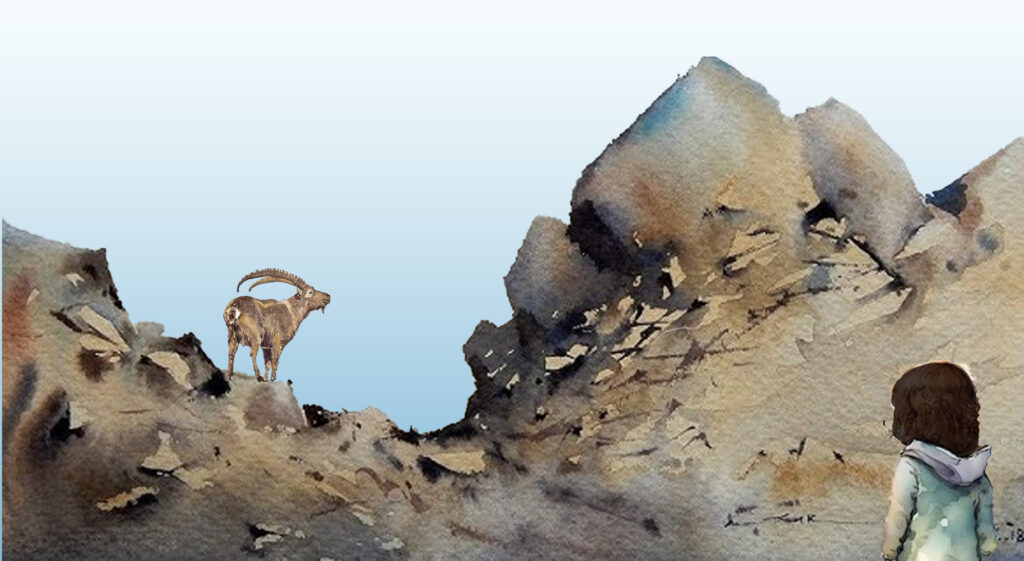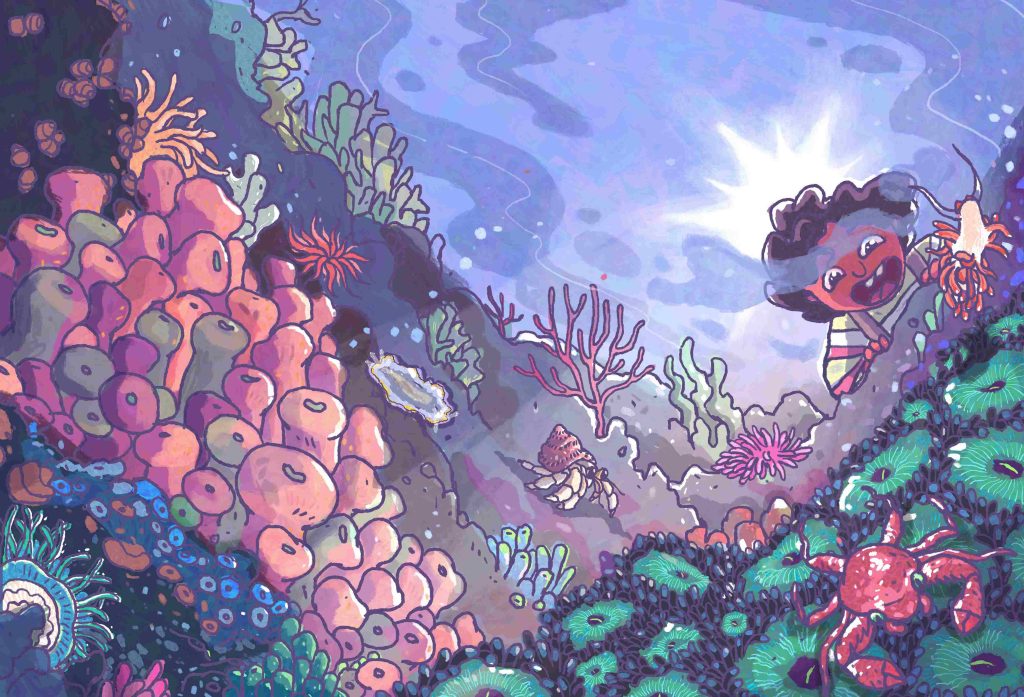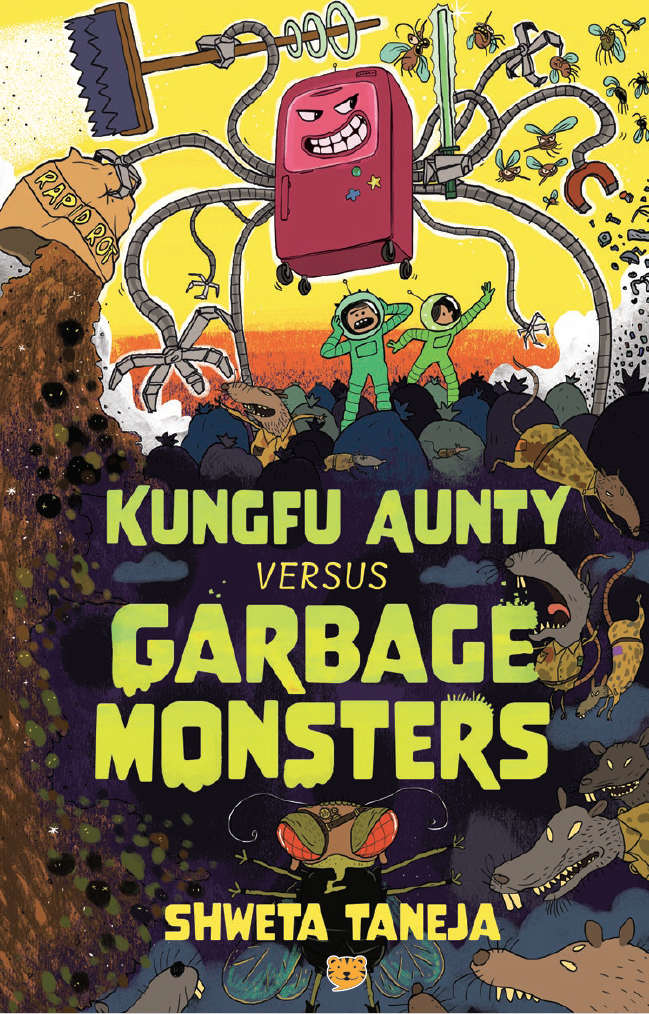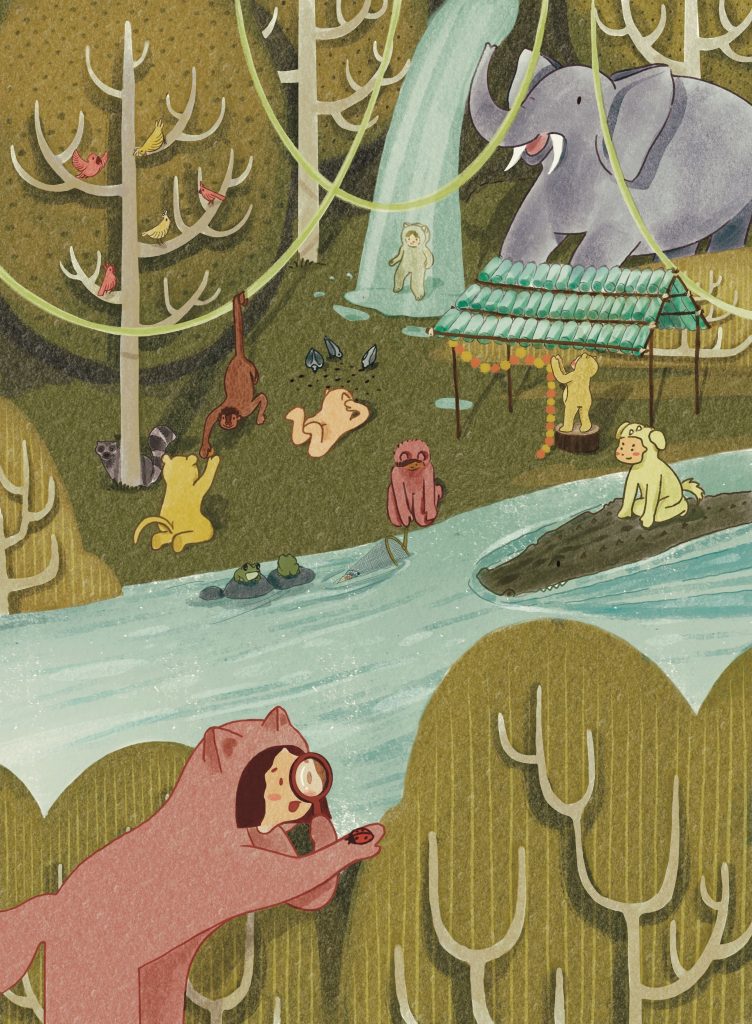It was a bright and sunny morning and the air was filled with birdsong. A baby deer (fawn) walked close to its mother, its tiny hooves making the leaves rustle. The fawn’s eyes were fixed on a few children nearby, who were eating mangoes under a large rain tree in their school. These children were accompanied by their environmental science teacher, Miss Rosie, who told them they were being watched by a baby spotted deer (or chital).
Unable to resist the fawn’s eyes, they threw the leftover mangoes for it to snack on, when something unexpected happened. Two bonnet macaques jumped down quickly and ran away with the mangoes. The disappointed fawn walked away, and so did the children, who went home and shared their experience with their parents.
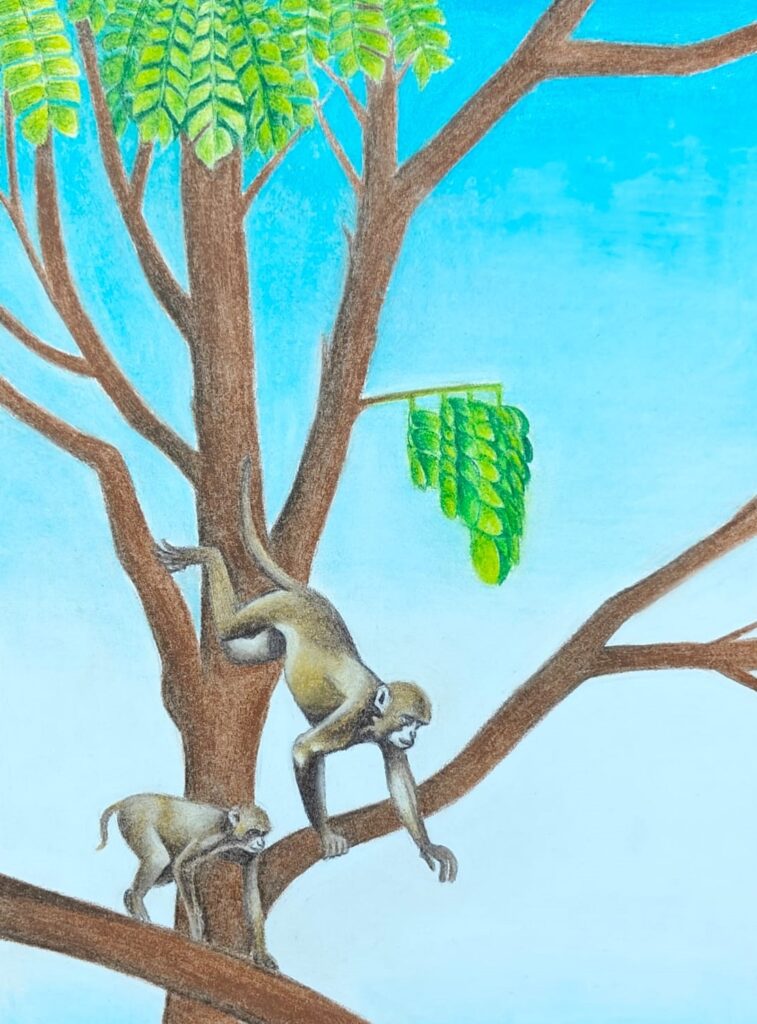
The next morning, the children were back in school, waiting patiently under the rain tree. However, they did not carry any food with them as their parents had told them that it is not good to feed wildlife. While the animals may eat the food because they are hungry, the food that humans give them can cause harm. Instead, the children were instructed to observe the animals, learn what they eat and how they find food in the wild.
While they were still discussing what their parents had taught them, the deer walked by with the fawn hopping beside her. “Look, it’s the baby deer again. Why don’t we give it a name?” asked Derrick. “Why not Bambi?” exclaimed Faheem. “Hush! Why? Are you trying to scare the deer away?” Poorna whispered as she tried to calm the others. “Why don’t we simply call it ‘Pretty’? The tiny white spots are pretty indeed”. There was silence for a moment and then everyone else signalled with just a thumbs-up. And from that moment on, the fawn was called Pretty.
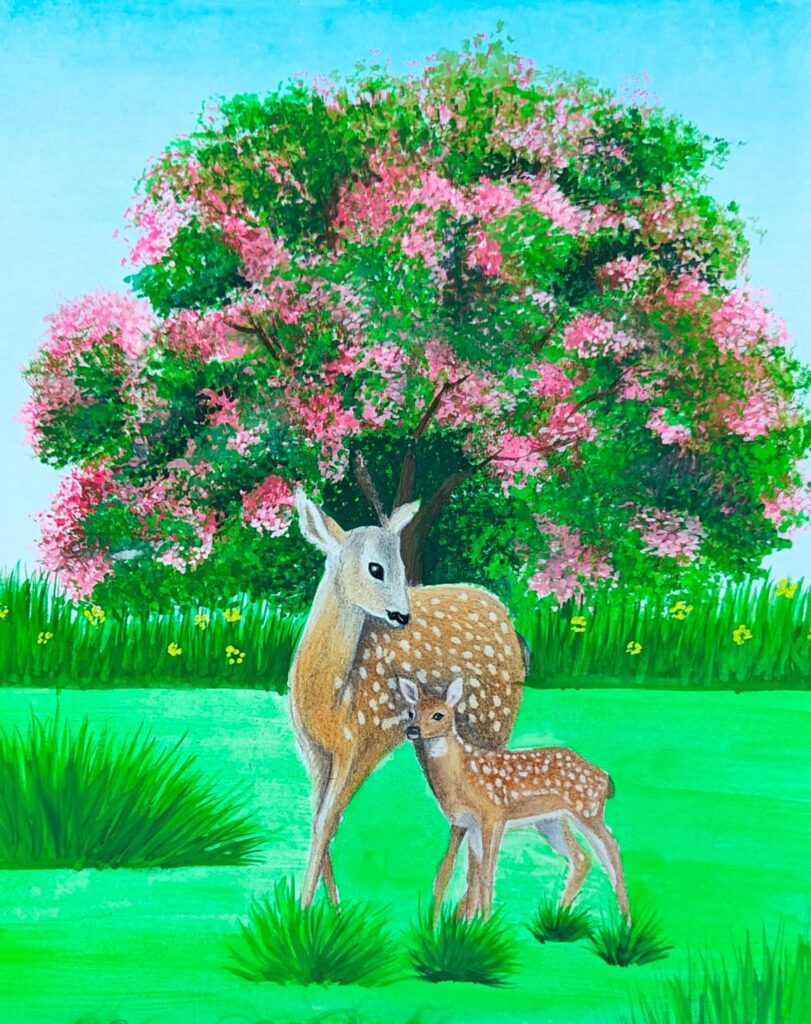
Pretty and her mother were seen almost every day inside the school premises. There were other deer as well and some of them had long and sharp antlers. The children learned from their parents and teachers that they should not go close to the deer with antlers. So, they stood at a safe distance and just watched Pretty hop and play.
One morning, as the children stepped out of their classroom there was a lovely peacock. It suddenly shook itself, spread its long feathers like a fan, and started dancing. Right behind him were a few females busily feeding, unmindful of his dance. The children watched the show for a while before the next class with Miss Rosie was due to begin.
Annie told Miss Rosie what they had witnessed a few minutes ago. It was the right moment to teach the enthusiastic children a few things about nature. “Children, you are really privileged. You are inside a large city and yet close to nature. You are fortunate to see deer, macaques and peafowl inside your school. Our school is in the lap of nature and we should learn to live with all these animals without troubling them. Now children, let us go back to where the last class ended,” Miss Rosie said, as she turned towards the blackboard.
“Today’s lesson is about animal diversity in India. There are different kinds of animals in our country. Yet, the peacock is our national bird because it is not only gorgeous but also sacred to many. The spotted deer is not only found in India, but also in Sri Lanka and Nepal. The bonnet macaque is, however, found only in southern India which makes it endemic.”
Annie stood up and said, “Miss, please tell us what is endemic.”
“Children, how many of you know kangaroos? Where are kangaroos found in the wild?”
“Australia” the class roared. “Good,” replied Miss Rosie. “Kangaroos are found in the wild only in Australia, so they are endemic to Australia. A plant or animal that is naturally found only in a particular geographical area is called endemic to that place.”
The following week, the class greeted Miss Rosie with the loudest “Good morning, miss!”
“Good morning to all of you, children. Today let us learn another new term: ‘ecosystem’. Does anyone know what it means?” There was silence. “Okay, let me explain. In nature, there is a system in which plants and animals interact with each other whereby one cannot live without the other. Together, they depend on the sun and rain. We are all part of an ecosystem along with the deer, peafowl, macaque and hundreds of other plants and animals that inhabit our school. The ecosystem is like a large machine and we are all its different parts. The sun provides energy to keep the machine running and rain keeps the different parts fit and free from fatigue, through the supply of water,” said Miss Rosie as the children looked at her in awe.
“Children, come outside with me. I will show you how an ecosystem works”. As Miss Rosie walked out and the children followed, they saw Pretty right next to the large rain tree. Her mother was resting in the shade. “Well children, can you see the deer resting under the rain tree? The tree not only gives oxygen but also shade that protects the deer from the heat. The fruits of the rain tree are eaten by the deer and the seeds are dropped farther away, where new rain trees grow.
“This is called mutual support,” she continued. “In an ecosystem, plants and animals mutually support each other. We are also animals and we cannot live without the support of other plants and animals. We are a part of the ecosystem that our school supports, just as it does the rain tree and deer.”
Miss Rosie left, but the children were still watching Pretty. Pretty knew she was being watched, so she twisted, turned and even jumped over her mother as though excited. “I am so happy to be in this school. Are we not blessed?” exclaimed Jennifer. “Yes, indeed” replied Poorna “Where else can we find someone like Pretty?”
The bell rang and it was time for the children to leave school. As they picked up their backpacks Sanjeev said, “It’s like a large family. A part of it is in school and the rest, at home. Bye little deer, we don’t feel like leaving you and going home, but we will be back tomorrow. We are one and we belong to the same ecosystem.”
